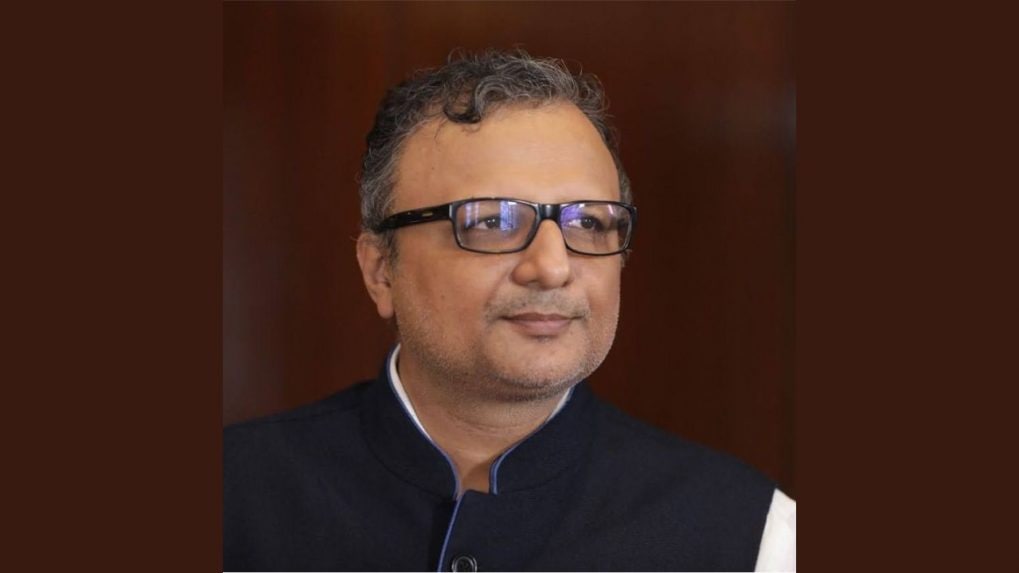Advertising
From Pink Slips to Silent Sidelining: Inside adland’s layoff and anxiety crisis

The Ministry of Information and Broadcasting’s renewed consultations on audience measurement have set the stage for a possible multi-agency ratings regime in India. Yet, even as the debate unfolds, Broadcast Audience Research Council — currently the only licensed body — appears undeterred. Shashi Shekhar Vempati, former CEO of Prasar Bharati and an independent board member of BARC, says the agency is equipped to adapt to policy shifts.
Vempati, also a co-founder of the DeepTech for Bharat Foundation spoke about BARC's capability in already laying the foundation for future-ready measurement systems.
Talking about MIB's July 2 announcement on liberalisation of TRP system in India, “This latest consultation is not an isolated event,” says Vempati. “It’s a continuation of an earlier process where a committee had been set up to review the ratings guidelines. Some of its recommendations were adopted by BARC, while others were left for further deliberation. What we are seeing now is perhaps the next phase of that.”
The MIB recently issued an advisory signalling a shift toward a multi-agency ratings ecosystem, sparking intense debate among broadcasters, advertisers, and media planners. However, Vempati cautions against jumping to conclusions. “It’s still at a consultation stage. The ministry is hearing from stakeholders across the spectrum — advertisers, broadcasters, agencies. A final decision will only come after that process is complete.”
Responding to criticism that BARC was not kept in the loop before the advisory was issued, Vempati maintains that the ministry’s approach is in line with its role. “BARC is a licensee — currently the only one — and a regulator is not obligated to consult a licensee before such moves. The regulator is expected to consult the entire industry.”
The evolution of India’s advertising and media ecosystem — with the meteoric rise of digital platforms and the increasing penetration of connected TVs — has made a reassessment of the ratings system inevitable, according to Vempati. “We’ve seen major shifts — the growth in advertising and the boom in digital and connected content consumption. This course correction was due.”
But he’s quick to note that any major changes won’t materialize overnight. “Even if recommendations are adopted and new guidelines notified, any new agency that enters the fray will have to go through the same rigorous process — from conducting an establishment survey to deploying a robust meter base. None of this can happen until the census data becomes available, likely only by 2027 or 2028.”
While some advertisers have expressed a desire to see BARC “ramp up” and compete fiercely with any newcomers, Vempati says it's too early to assess what kind of competition might emerge. “We don’t even know who the competition is yet. First, we need to see the final guidelines and whether any new entities even apply for a license under them.”
Still, he acknowledges that BARC has done its internal homework. “A lot of groundwork has been laid historically, especially in cross-media measurement. I’m confident BARC will take the necessary steps in response to these developments.”
Whether India is ready for a multi-currency ratings system is still unclear, Vempati explains. “Internationally, different countries have different models. In the US, for instance, terrestrial broadcasting is still dominant, and different platforms carry very different types of content. Hence, separate ratings systems exist for each.”
In India, however, the content ecosystem is less fragmented. “We don’t have a strong terrestrial broadcasting layer anymore. So unless there is clarity on what exactly new licensees would be measuring — linear TV, Connected TV, digital OTT — it’s difficult to say whether multiple ratings systems make sense here.”
Vempati also questions whether new entrants like DPOs, OTT platforms, or tech giants could meet the high standards mandated in the current guidelines. “It’s not just about generating data. You need to comply with regulations, conduct an establishment survey, and install a wide network of meters. If BARC, an industry-backed body, finds this a challenge, it’s hard to imagine a single entity pulling it off profitably — unless it’s digital, where data collection can be more software-based.”
Even in digital, there are hurdles. “If someone claims to measure YouTube, what exactly are they measuring? YouTube hosts a vast range of content — much of it unlicensed or user-generated. And will platforms like Google even share that level of data? Highly unlikely.”
While the future of new TV measurement licensees remains uncertain, Vempati believes Connected TV (CTV) presents the most immediate opportunity for innovation. “CTV platforms could potentially offer a viable path forward. The content here is often different from satellite TV, and it doesn’t fall under the traditional licensing framework. So yes, CTV could be a distinct domain where measurement evolves.”
As for TAM — the former rival to BARC — and speculation that it may re-enter the ratings arena, Vempati is cautious. “I can’t comment specifically on TAM. But let’s be clear — the bar for entry is high. There are strict criteria, substantial operating costs, and the necessity of updated census data. This is not something that will happen overnight.”
Ultimately, Vempati sees the current consultations not as a disruptive overhaul, but as a forward-thinking recalibration of India's media measurement system. “There are many hoops to cross before we see tangible changes. But we’re definitely heading into a more nuanced and dynamic ratings future — one that reflects the changing nature of how India watches, consumes, and engages with content.”
From purpose-driven work and narrative-rich brand films to AI-enabled ideas and creator-led collaborations, the awards reflect the full spectrum of modern creativity.
Read MoreLooking ahead to the close of 2025 and into 2026, Sorrell sees technology platforms as the clear winners. He described them as “nation states in their own right”, with market capitalisations that exceed the GDPs of many countries.